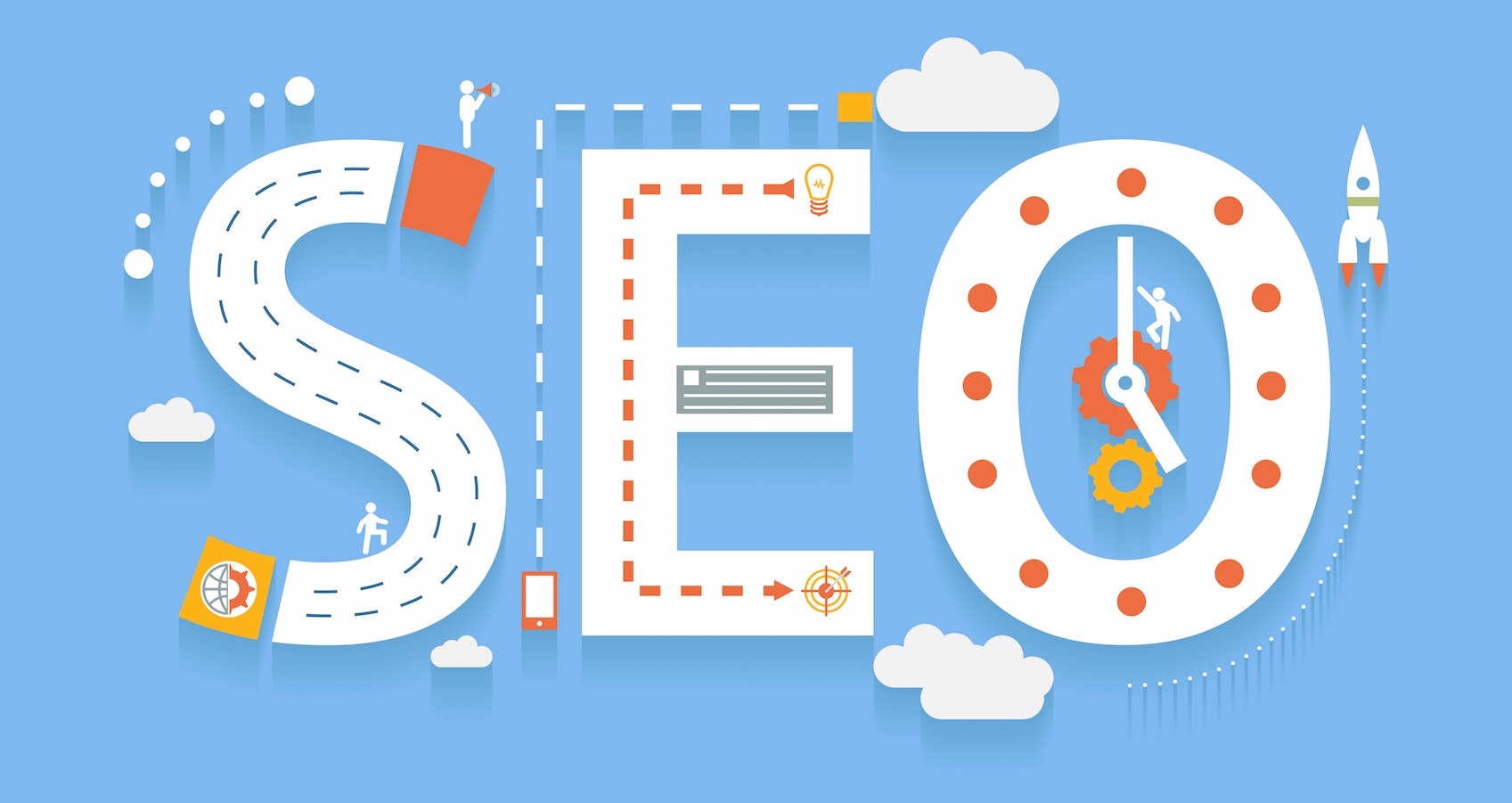
In the ever-changing world of digital marketing, search engine optimization (SEO) has changed a lot from the old tactics that focused on keywords and backlinks. Even though these things are still significant, SEO today takes a more sophisticated method that takes into account how vital user experience (UX) design is.
UX design used to just be about how something looked and how well it worked, but now it's an essential part of how search engines work. Gone are the days when search engines solely relied on quantitative factors; today, they emulate human cognition, emphasizing the quality of user interaction with websites.
In this paradigm shift, UX design emerges as a pivotal player in the SEO game, serving as a conduit to enhance user satisfaction, engagement, and, ultimately, search visibility. This article delves into the symbiotic relationship between UX design and SEO, unraveling why does UX design matter for search engine optimization.
Understanding UX Design
The process of making user interactions with a website satisfying, valuable, and engaging is known as user experience design or UX design. The simplicity and clarity of the website's navigation, functionality, and usability are guaranteed by UX design.
Practical user experience (UX) design helps websites draw in visitors and turn them into active members. Because it doesn't captivate users, poor UX raises the bounce rate. They quit looking at the website right away. A significant 88% of online users express that they would only revisit a website if they had a positive user experience.
What Is Search Engine Optimization?
Search engine optimization, or SEO, is the process of making websites more visible in search engine results pages. A website with good search engine optimization (SEO) may reach a broad audience and draw in a lot of potential clients.
Such a website will, therefore, naturally receive a ton of traffic. As a result, in the current digital era, SEO is crucial for businessgrowth.
What Are The Types Of User Experience?
To fully comprehend the demands of the end user, user experience evaluation must consider the three forms of UX design. Among the three categories of UX are;
Information
Information architecture is one facet of a content strategy that is often neglected. The arrangement and presentation of content on a website require careful thought. You should think about user flows and navigation for every type of information you display.
Interaction
There is a confident manner in which visitors engage with your website, known as an interaction design pattern. Buttons, menus, and interfaces are examples of website elements that fall under the interaction UX category.
Visual Design
For the final user, appearance and feel count. You want the color, font, and pictures on your website to all work together cohesively. This kind of UX will include a user interface (UI), but it's crucial to understand that UI and UX are not the same thing.
Why Is UX Essential In SEO?
Page Dwell Time And Bounce Rate
The percentage of people that visit only one page on your website, typically your homepage or a landing page, is known as your website's "bounce rate." A high bounce rate may indicate that visitors were unable to locate what they were searching for.
Instead, they turned to page two and quickly lost interest. On the other hand, the duration of time people spend on a particular page, or "dwell time," is another indicator that Google takes into account.
Google sees it as a good sign when people stay on your website for extended periods. On the other hand, if visitors to your website leave quickly, Google determines that the page was not helpful or pertinent to the search query.
When you concentrate on offering pertinent and helpful information, users get more involved and stay on your website longer. User engagement raises your metrics, which raises your search engine ranking in general.
Mobile-Friendly Design
Having a website that is responsive to mobile devices is essential since more people are using these devices to access the internet. Google employs mobile-first indexing, which implies that when determining a site's ranking, its mobile version of the material is given priority.
Because it doesn't offer a suitable user experience, an excellent mobile experience might result in higher rankings. 50% of users indicate that they would use a website less if it lacks mobile-friendliness, even if they have a favorable opinion of the business. (Source: Think With Google)
Quality And Relevance Of Content
Good user experience (UX) starts with providing relevant, high-quality information. Users are more likely to remain interested and explore a website further if they discover helpful information there. Consequently, there may be a higher chance of backlinks and social media shares, both of which are crucial components of SEO.
Obtainability
In addition to being morally right, making sure your website is accessible to people with impairments will help it rank higher on search engines. A website that is easily accessible can score higher in search results since search engines strive to provide results that are helpful to a variety of visitors.
Social Signals
Although Google's ranking algorithm may not use direct social media indicators, a solid social media presence can have an indirect influence on SEO. Increased exposure, traffic, and even backlinks can result from consumers sharing your information on social media once they find it interesting.
UX Design Best Practices For SEO
Your SEO may succeed or fail based on the interaction between UX and SEO. Let's examine the aspects of SEO and UX that improve user experiences and lead to higher Google rankings.
Site Architecture And Navigation
The arrangement and interconnectivity of pages on your website are referred to as its architecture. A well-designed site architecture is essential for SEO since it makes it easier for Google to identify and index your page. From a UX/UI standpoint, it facilitates users in finding the information they require quickly.
The most important aspects of a website, according to 94% of respondents in a poll, are its architecture and ease of navigation. Creating a website that is simple to use is something you should absolutely put time and effort into. Users will locate someone else who has previously done it if you don't.
A well-designed website's click depth or click distance is one of its components. This is the number of clicks needed to go from the home page to a specific page.
Users typically prefer subpages that need a few clicks to reach. Ideally, every page should be accessible from the main page with less than four clicks. Enhancing the architecture and navigation of a website entails;
- Putting pages into categories and building a clear structure (for example, utilizing techniques like the SILO structure).
- Creating a simple menu that explains the subjects and subtopics of the website (having a solid understanding of UX authoring will assist here).
- Creating a link structure that is optimal for distributing link juice in a balanced manner.
Layout And Design
An attractive layout has a direct impact on visitor behavior and is essential to successful SEO marketing. It facilitates the user's ability to locate pertinent information, understand it quickly, and execute the intended action. Structured content gives search algorithms a better way to determine the relevancy of a website.
Using headers to organize text is crucial. We advise heeding these two critical pieces of advice;
- Although you are free to use as many H1 headers as you like on a page, we recommend using just one.
- Observe the header hierarchy. Never, for instance, place the H1 heading below the H2 heading.
- Using visual components and optimizing them with alt tags is also advised. However, it must blend in with the general concept and branding of the website.
High-Quality Content
Content is the backbone of SEO, and UX design plays a pivotal role in presenting it effectively. Content should be not only informative but also easily readable and scannable. Use headings, bullet points, and concise paragraphs to enhance readability. Engaging, relevant, and well-presented content keeps users on your site, positively impacting SEO metrics.
Speed And Core Web Vitals
Users may find it annoying to have to wait for a website to load, mainly when using a mobile device.
A page load time of at most 2.5 seconds is ideal. During this period, customers can return to the SERP and select one of their rivals if the website or any of its components don't load. Your conversion rate can also decline.
Furthermore, Core Web Vitals (CWV) takes into consideration the initial screen loading speed, user-friendliness, and visual consistency. A lower proportion of people abandoning your website due to poor CWV performance lowers your SEO rankings and results in lost conversion possibilities.
SEO And UX Metrics To Track
When creating and executing an SEO and user experience plan, you should assess the success of your efforts. The first and most crucial phase in the process is to assess the performance of the website using UX metrics for SEO.
Behavioral UX Metrics
Among the behavioral metrics are;
Time Spent Dwelling
The amount of time spent on a page from the time a user leaves the SERP until they come back to it is referred to as this. Dwell time contributes to the assessment of the page's relevancy to search terms and users' content quality satisfaction.
Although Google Analytics doesn't display dwell time directly, you can get a rough notion of the average dwell time by looking at the average session length indicator, which indicates the average amount of time a person spends on the website overall. This also applies to sessions that start with SERPs.
Rate Of Bounces
This is the proportion of visitors to your website who only went to this page after leaving. This number shows how well your content and website are navigated.
Google Analytics allows you to monitor this bounce rate, even though it is no longer included in the new GA4's list of default metrics. Nevertheless, GA4 now gives you the choice to manually add the bounce rate and track these metrics in addition to keeping an eye on the engagement rate.
Average Engagement Time
This indicator calculates how long your webpage typically stays in the browser's focus, which indicates how much attention it is receiving from users. It offers perceptions of the path and experience of users on your page.
Longer engagement durations often point to greater user participation and interest, indicating that people are drawn to your website. Conversely, a drop in engagement time could point out areas that need work. In GA4, this statistic is also accessible.
Apart from Google Analytics, there are several additional specialized tools available for assessing user activity, such as Hotjar or Clarity. These technologies come with capabilities like heatmaps, which visually show visitors' actions on your website.
Technical UX Metrics
Metrics related to technical user experience are equally essential for evaluating and enhancing website performance. Among the essential technical UX metrics are;
Core Web Vitals (CWV)
Google developed these particular performance metrics to gauge important UX components. The metrics included in CWV include visual stability (Cumulative Layout Shift), page interactivity (First Input Delay), and viewport loading speed (Largest Contentful Paint). Owners of websites can use these data as standards to assess and enhance the user experience. Core Web Vitals gauge the general user experience of a webpage.
Interaction To Next Paint (Inp)
In order to get around the constraints of FID, Google created the INP metric, which measures responsiveness by using information from the Event Timing API. A bad user experience occurs when a page becomes sluggish due to a user interaction.
All user interactions are measured for latency using INP, which yields a single number representing the proportion of interactions that took place below the latency threshold. A lower INP indicates better user experience and responsiveness.
Internal Links Distribution
The importance of a page is indicated by the number of internal links referring to it. An absence of internal links on a page significantly reduces its likelihood of being indexed. For this reason, doing an internal connection analysis is essential.
Click Depth Or Click Distance
This measure describes how many clicks are needed to get from the homepage to a particular page or piece of information. It calculates the degree of hierarchy or the number of steps users must go to get where they want to go.
Search engine algorithms assign a more excellent Click Distance score to pages that are closer to the homepage. Therefore, the depth should usually be at most four clicks.
How Designers And SEOs Can Work Together?
Because UX and SEO are related, UX designers and SEO experts frequently work together to enhance a website's search engine ranking and usability.
Share Data And Reports
Reports can be sent between SEO experts and designers to enhance a website's functionality. Google Analytics UX signal data can confirm UX design choices or highlight areas of friction that are hurting a page's SEO ranking.
User experience problems may be identified via an SEO audit, while content quality weaknesses can be identified by user signal analysis.
Meet Regularly
UXers and SEOs might collaborate better to understand a website's audience through frequent discussions. SEO experts may gain a thorough understanding of user intent by examining user personas and user journey maps developed by UX designers. This allows them to provide content that is relevant to users' search queries.
Consult Before Making Big UX Or SEO Decisions
Within a single, user-centered ecosystem, both SEO and UX coexist. Many of the parameters that designers monitor in user testing are also evaluated by Google. The efficacy and overall performance of a website will be enhanced by decision analysis from a combined perspective. User experience components are crucial in the competitive world of SEO.
Frequently Asked Questions
How Does User Intent Play A Role In Both UX And SEO Strategies?
Understanding user intent is vital for creating user-centric content. Aligning UX design with user intent not only enhances satisfaction but also contributes to improved SEO rankings as search engines prioritize relevance.
What's The Impact Of Navigational Structure On SEO?
Clear navigation reduces frustration, lowers bounce rates, and signals valuable content for improved SEO rankings.
How Does UX Design Stay Ahead Of Search Algorithm Changes?
UX design incorporates user-centric elements that align with evolving search algorithms for sustained SEO optimization.
Final Words
The symbiotic relationship between UX Design and search engine optimization (SEO) is undeniable, reshaping digital strategies. As search engines increasingly prioritize user-centric elements, incorporating responsive design, intuitive navigation, and emerging technologies becomes paramount.
Websites adhering to UX best practices not only enhance user satisfaction but also boost SEO rankings. It's evident that the question, Why does UX Design matter for search engine optimization, is more relevant than ever, underlining the critical need for seamless user experiences in the ever-evolving digital landscape. Integrating UX principles is not just about user satisfaction; it's a strategic imperative for optimizing SEO performance.




